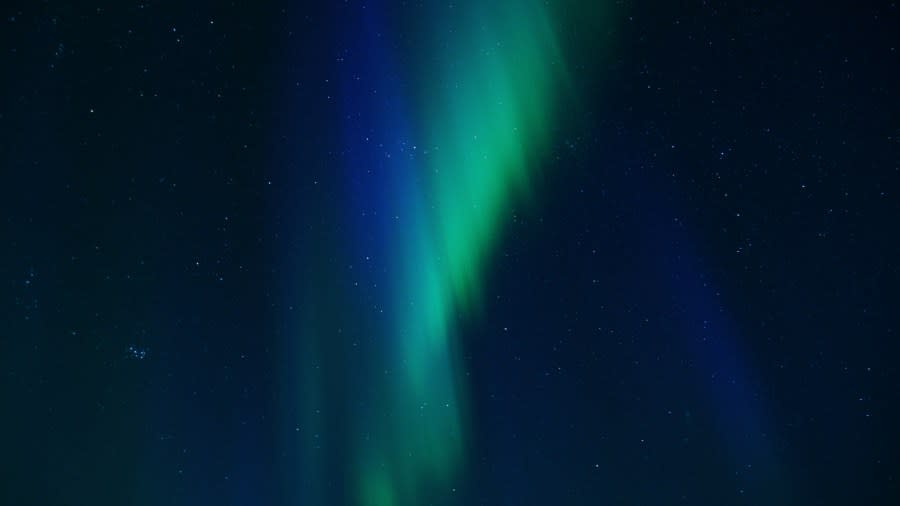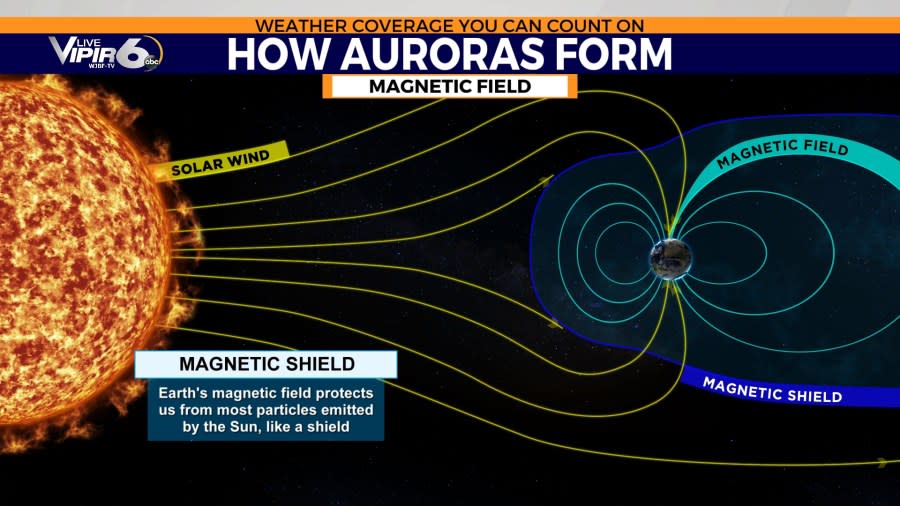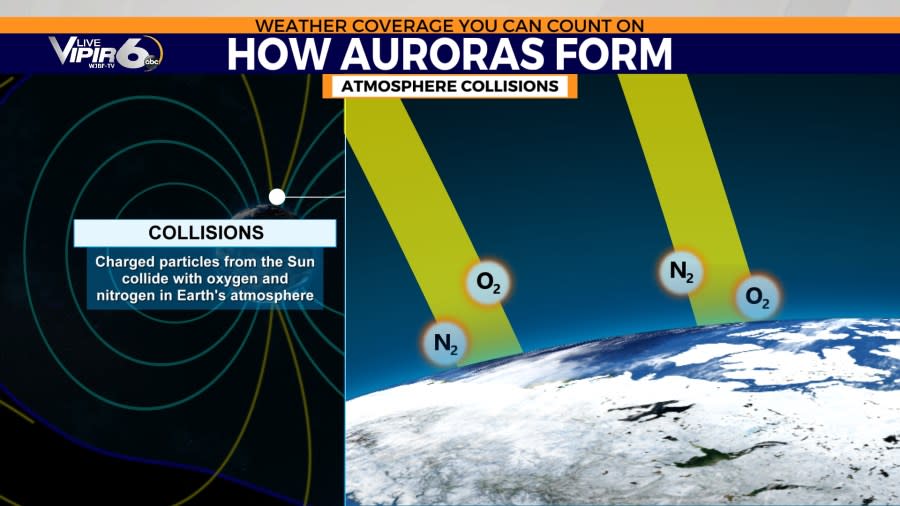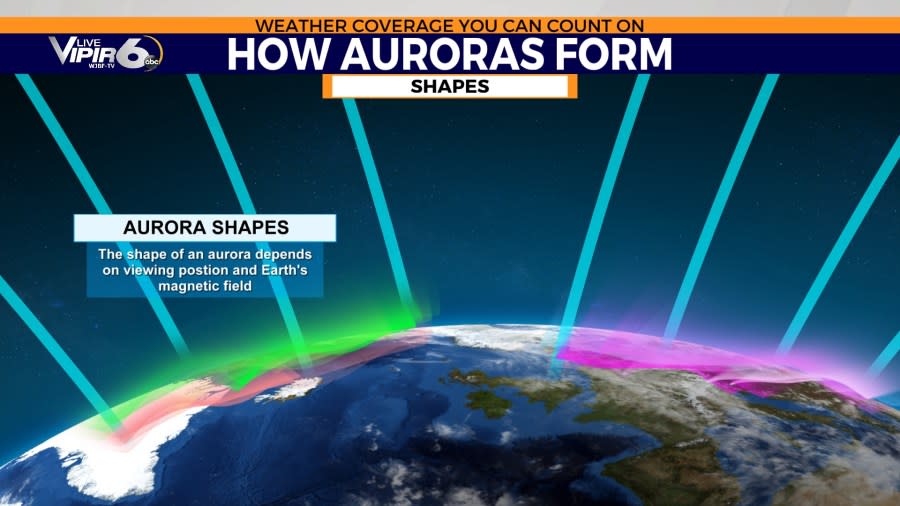Understanding the Aurora Borealis: A Journey into the Science of Northern Lights


If you were up Friday night, you probably noticed something unusual in the sky. It was the Aurora Borealis, also known as the Northern Lights. Normally, people see this stunning show in the sky closer to the North Pole. However, a recent powerful G5 geomagnetic storm caused by a solar flare gave people at lower latitudes the chance to witness it. With another chance to see the lights on Sunday night, now is the perfect time to learn more about them.

We were able to see the northern lights here in the CSRA because of a geomagnetic storm, also known as a solar storm. The sun’s energy causes this disturbance in Earth’s magnetic field. We rate them on a scale from G1 (minor) to G5 (extreme). The storm that brought the Northern Lights to the CSRA was a G5. The last time we had a storm of this strength was back in October of 2003.
The formation of auroras begins with the sun releasing charged particles (electrons and protons). This occurs when there is a solar flare or coronal mass ejection. A strong burst of solar wind then carries the particles towards Earth.

Our planet’s magnetic field normally deflects most of these particles. However, during a strong solar storm like the one we just experienced, some particles can sneak in near the poles.



Once they reach our atmosphere, they collide with oxygen and nitrogen gases and release energy in the form of light.

The excited gases and their altitude determine the colors of the aurora. Nitrogen produces the pink color we witnessed here in the CSRA Friday night.

Auroras can also come in different shapes. The shape depends on where you are viewing the lights and the earth’s magnetic field.

Do you have a weather-related topic that you would like to know the science behind? Submit your ideas to mhyatt@wjbf.com.

For the latest news, weather, sports, and streaming video, head to WJBF.
